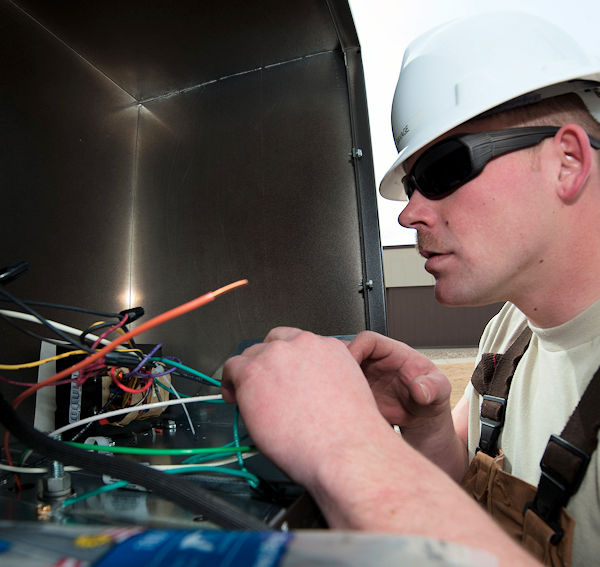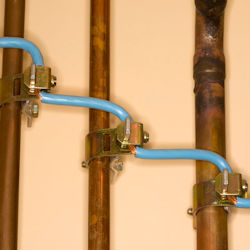Insulation
Insulation is made of material that does not conduct electricity (usually plastic, rubber, or fiber) that covers wires and prevents conductors from coming in contact with each other or any other conductor.

It keeps wires and other conductors from touching, which prevents electrical short circuits. It also prevents live wires from touching people and animals, thus protecting them from electrical shock.
Insulation helps protect wires from physical damage and conditions in the environment. Insulation is used on almost all wires, except some ground wires and some high-voltage transmission lines.
Special insulation is used on wires and cables that are used in harsh environments. Wires and cables that are buried in soil must have an outer covering of insulation that is flame-retardant and resistant to moisture, fungus, and corrosion.
In all situations, you must be careful not to damage insulation while installing it.
- Do not allow staples or other supports to damage the insulation.
- Bends in a cable must have an inside radius of at least 5 times the diameter of the cable so that insulation at a bend is not damaged.
- Since extension cords often receive rough handling and may be used near water, it's important that insulation is not damaged.
NEC U.S. Wiring Color Codes
Insulation on individual wires is often color-coded. In general:
- Insulated wires used as equipment grounding conductors are either continuous green or green with yellow stripes.
- The grounded conductors that complete a circuit are generally covered with continuous white or gray insulation.
- The ungrounded conductors, or "hot" wires, may be any color other than green, white, or gray. They are usually black or red.
Knowledge Check Choose the best answer for the question.
7-7. Ungrounded, or "hot" electrical conductors are usually colored _____.
You forgot to answer the question!

